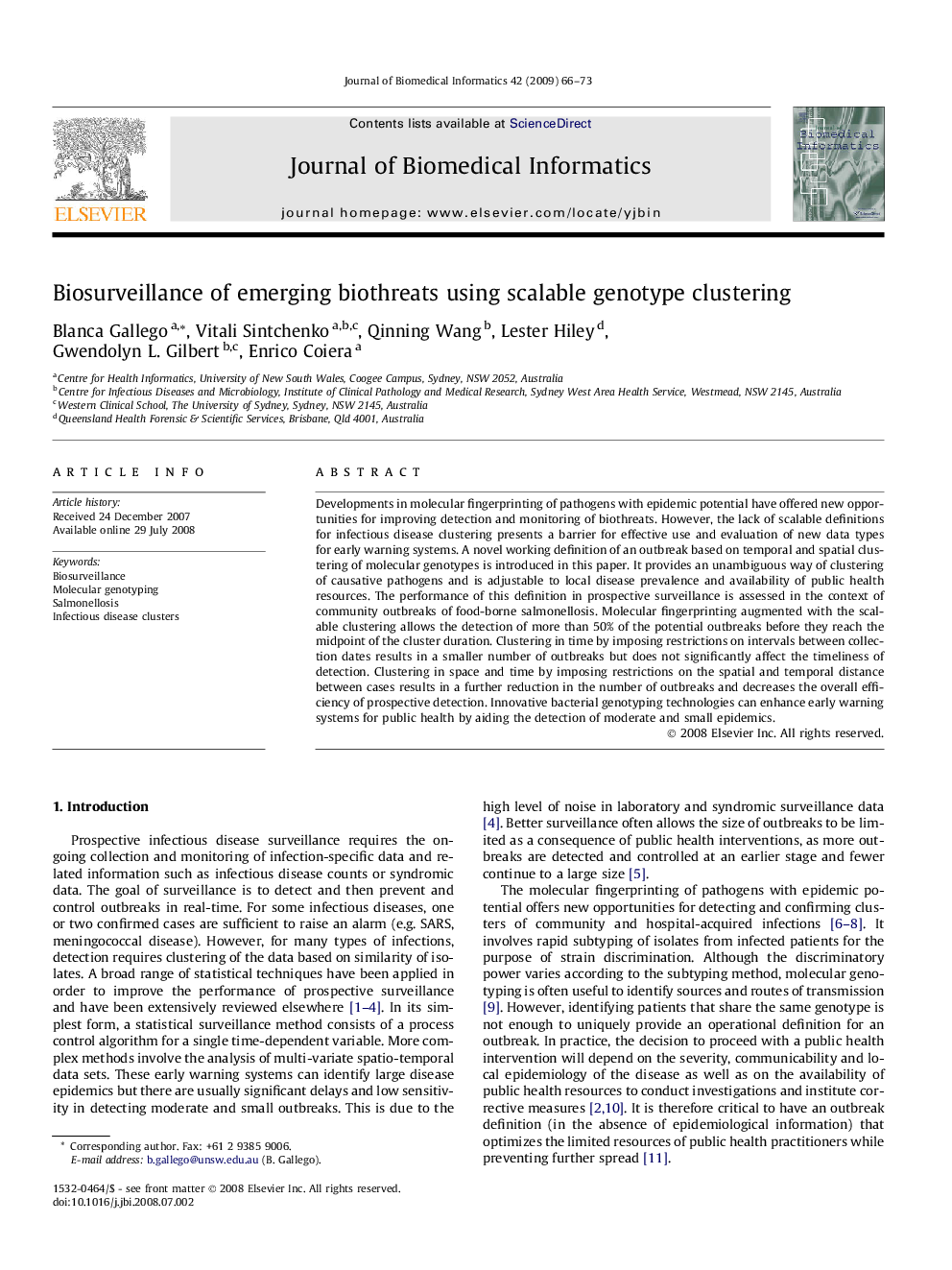| Article ID | Journal | Published Year | Pages | File Type |
|---|---|---|---|---|
| 518578 | Journal of Biomedical Informatics | 2009 | 8 Pages |
Developments in molecular fingerprinting of pathogens with epidemic potential have offered new opportunities for improving detection and monitoring of biothreats. However, the lack of scalable definitions for infectious disease clustering presents a barrier for effective use and evaluation of new data types for early warning systems. A novel working definition of an outbreak based on temporal and spatial clustering of molecular genotypes is introduced in this paper. It provides an unambiguous way of clustering of causative pathogens and is adjustable to local disease prevalence and availability of public health resources. The performance of this definition in prospective surveillance is assessed in the context of community outbreaks of food-borne salmonellosis. Molecular fingerprinting augmented with the scalable clustering allows the detection of more than 50% of the potential outbreaks before they reach the midpoint of the cluster duration. Clustering in time by imposing restrictions on intervals between collection dates results in a smaller number of outbreaks but does not significantly affect the timeliness of detection. Clustering in space and time by imposing restrictions on the spatial and temporal distance between cases results in a further reduction in the number of outbreaks and decreases the overall efficiency of prospective detection. Innovative bacterial genotyping technologies can enhance early warning systems for public health by aiding the detection of moderate and small epidemics.
